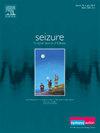Genotype and phenotype correlation in epilepsy patients with SMARCA2 variants
IF 2.8
3区 医学
Q2 CLINICAL NEUROLOGY
引用次数: 0
Abstract
Aim
This study aimed to determine the genotype and phenotype correlations for the SMARCA2 gene in epilepsy patients.
Method
We analysed the genotype-phenotype correlations of 24 patients in our cohort and evaluated 46 epilepsy patients from published studies.
Results
In our cohort, 21 variants were identified in 24 patients. Two variants, p.P883L and p.G853R, were identified in two patients. 21 variants were de novo, and 17 were novel. Seizure onset ages ranged from 1 day to 75 months (median age: 15 months). The predominant seizure type was focal seizures (60.9 %). Five patients were diagnosed with developmental epileptic encephalopathy. In our cohort, 52.8 % of epilepsy patients had dental diseases, including widely spaced teeth, fused teeth, and hypodontia. Collectively, in the published studies and our cohort of patients with SMARCA2 variants, 77.3 % (51/66) of the variants were located in the SNF2-ATPase domain. Seizures were controlled in 45.8 % (11/24) of the patients in our cohort by valproate or levetiracetam.
Interpretation
The variations in SMARCA2 in epilepsy patients were predominantly located in the SNF2-ATPase domain. The clinical features of SMARCA2-related epilepsy include seizure onset in infancy, and focal seizures. Dental abnormalities are among the significant phenotypes observed in patients with SMARCA2 variants.
癫痫患者SMARCA2变异的基因型和表型相关性
目的研究癫痫患者SMARCA2基因的基因型和表型相关性。方法分析本组24例患者的基因型-表型相关性,并对已发表研究的46例癫痫患者进行评价。结果在我们的队列中,在24例患者中鉴定出21种变异。在两名患者中发现了p.P883L和p.G853R两种变体。21个变异是从头开始的,17个是新的。癫痫发作年龄从1天到75个月不等(中位年龄:15个月)。发作类型以局灶性发作为主(60.9%)。5例患者被诊断为发育性癫痫性脑病。在我们的队列中,52.8%的癫痫患者有牙齿疾病,包括牙间距大、牙融合和牙下畸形。总的来说,在已发表的研究和我们的SMARCA2变异患者队列中,77.3%(51/66)的变异位于snf2 - atp酶结构域。45.8%(11/24)的患者服用丙戊酸盐或左乙拉西坦后癫痫发作得到控制。癫痫患者SMARCA2的变异主要位于snf2 - atp酶结构域。smarca2相关性癫痫的临床特征包括婴儿期发作和局灶性发作。牙齿异常是在SMARCA2变异患者中观察到的重要表型之一。
本文章由计算机程序翻译,如有差异,请以英文原文为准。
求助全文
约1分钟内获得全文
求助全文
来源期刊

Seizure-European Journal of Epilepsy
医学-临床神经学
CiteScore
5.60
自引率
6.70%
发文量
231
审稿时长
34 days
期刊介绍:
Seizure - European Journal of Epilepsy is an international journal owned by Epilepsy Action (the largest member led epilepsy organisation in the UK). It provides a forum for papers on all topics related to epilepsy and seizure disorders.
 求助内容:
求助内容: 应助结果提醒方式:
应助结果提醒方式:


